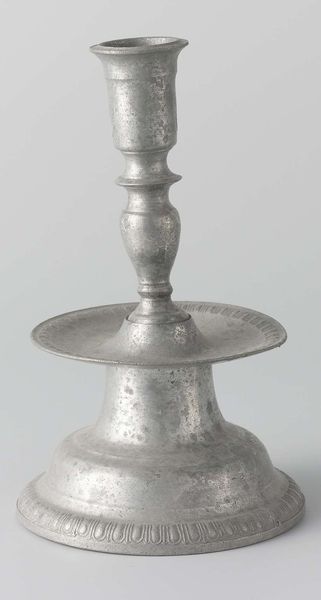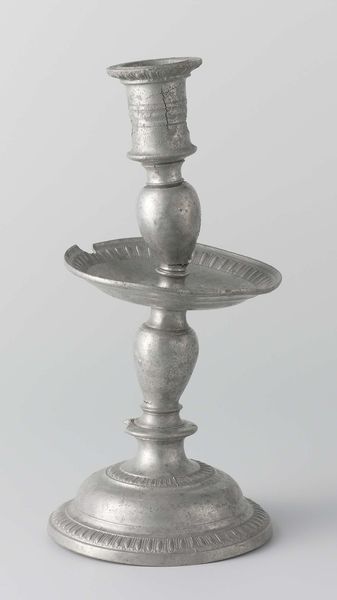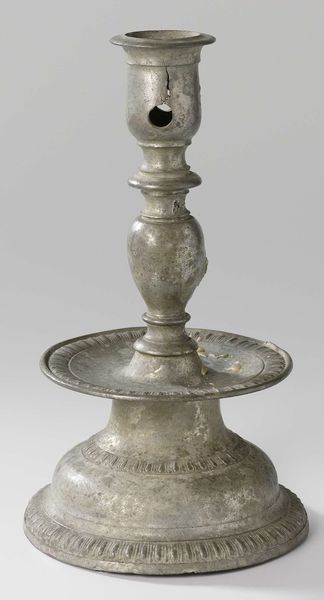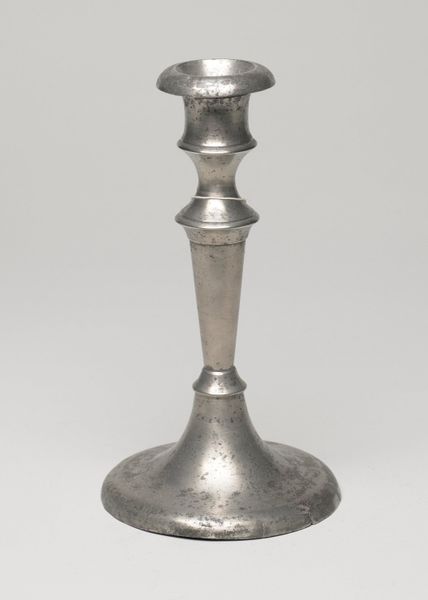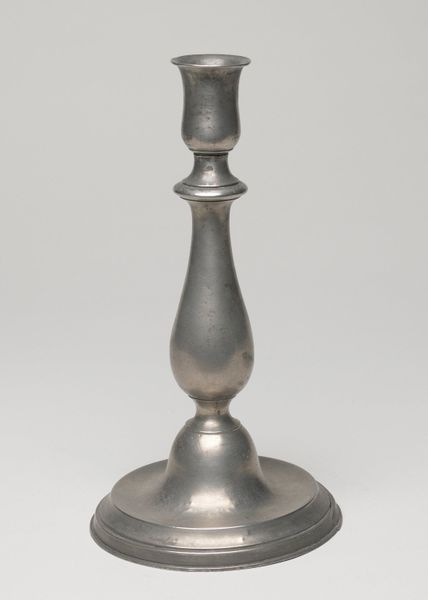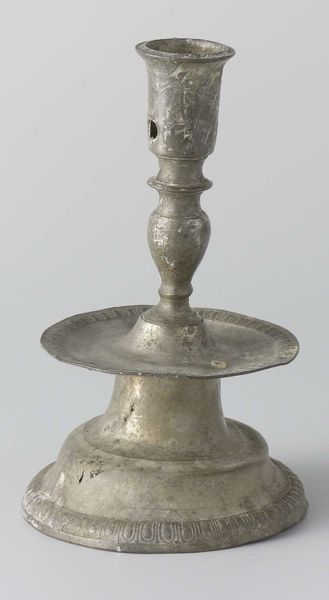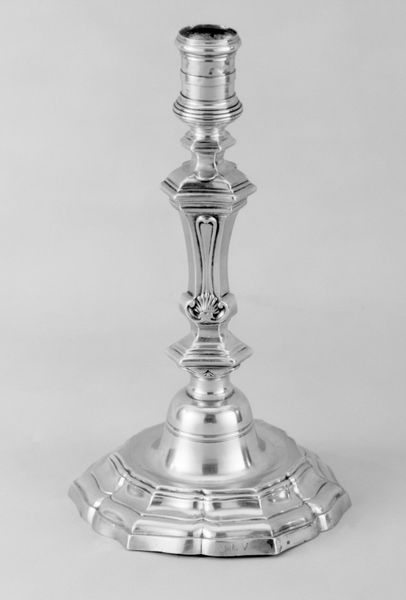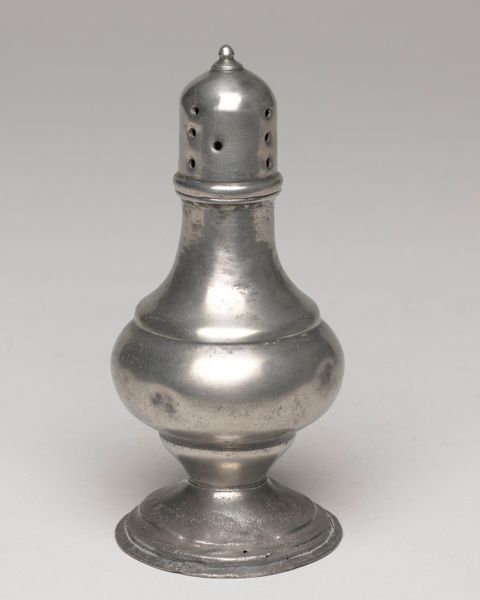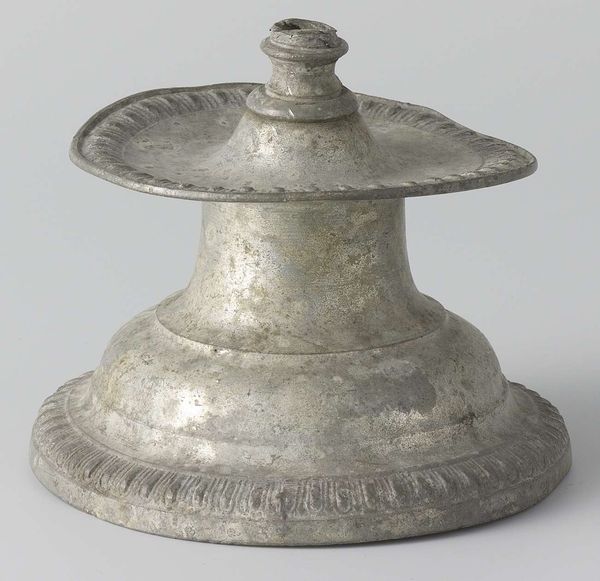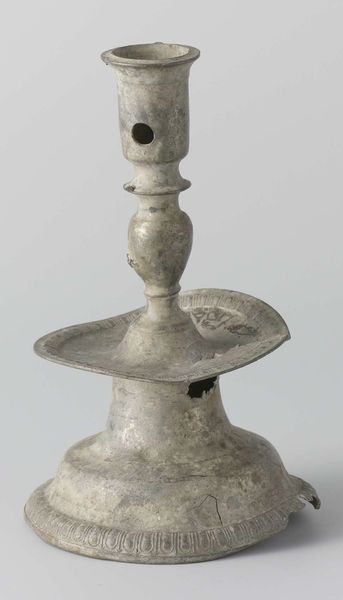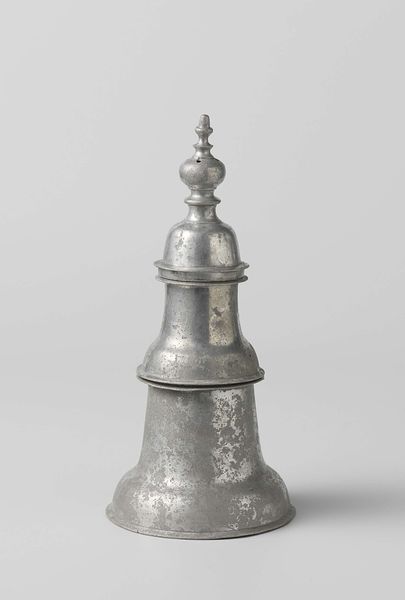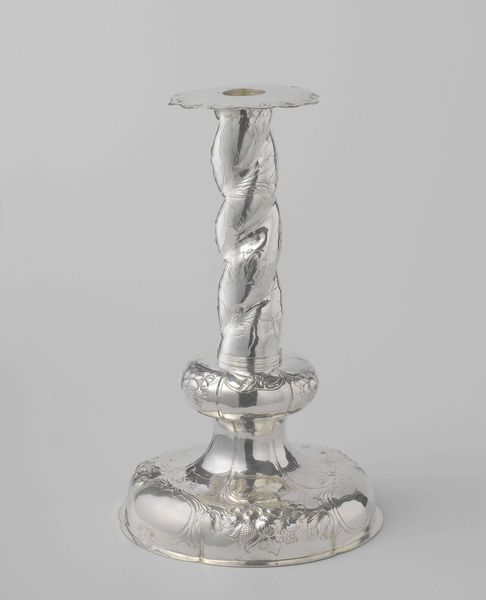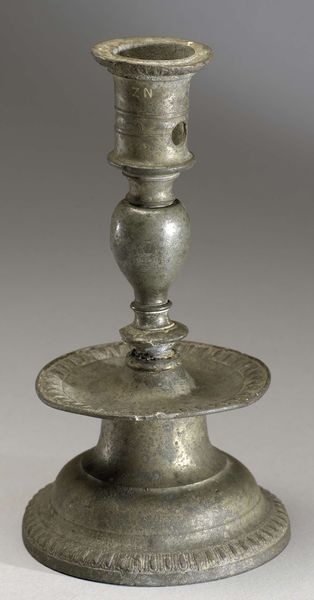
brass, metal, sculpture
#
brass
#
baroque
#
metal
#
sculpture
#
decorative-art
Dimensions: height 15.7 cm, diameter 9.3 cm
Copyright: Rijks Museum: Open Domain
Editor: So, here we have a brass, four-part Baroque candleholder, created around 1590-1596 by an anonymous artist. I find the use of metal to be quite intriguing; the craftsmanship almost gives off an austere impression. What's your take on this piece? Curator: Well, from a materialist perspective, the focus lands squarely on production. Brass was not some readily available substance; it needed to be mined, smelted, worked. Its very existence speaks to an infrastructure of labor. And who was this “anonymous” artist? Were they a guild member? A journeyman? What does anonymity itself tell us about the status of artisans at the time? Editor: That’s a very interesting point. I hadn't really considered the socio-economic factors involved in simply obtaining and shaping the metal itself. The fact that it's brass suggests some degree of wealth, right? Curator: Exactly. Brass was a commodity, and this candelabra speaks to a system of consumption. Beyond the acquisition of raw materials, consider the investment in tools and training to create this piece. The tooling marks tell us something about repetitive movements and processes. It brings to light a clear, though often unacknowledged, value system where the end product veils all prior production costs. Editor: So, you're saying the candleholder represents more than just decoration; it encapsulates economic and social relationships. Curator: Precisely! It represents access, labor, skill. Even its Baroque styling, associated with opulence, contrasts with what looks like the candleholder's disrepair; that juxtaposition creates a complex picture of value and use. Editor: That's a fascinating perspective. It really shifts how I view decorative art from that era. Now I'm thinking about all the hands that contributed to its creation. Curator: Exactly. It moves beyond aesthetic appreciation to considering labor, material conditions and distribution of goods.
Comments
No comments
Be the first to comment and join the conversation on the ultimate creative platform.
